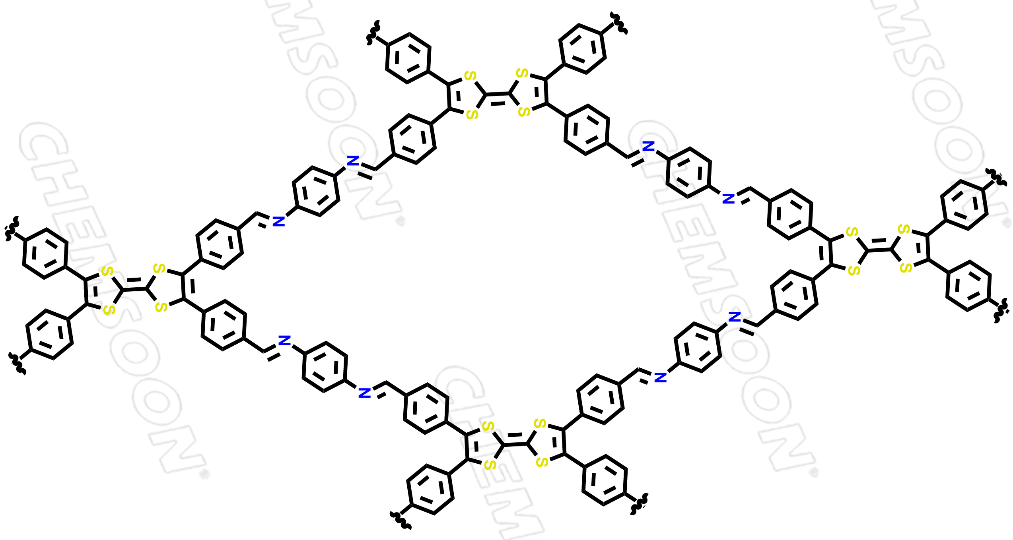Home > Product Category > COFs-HOF-POF > COFs by Functions > Opteoelectronic COFs > Thienyl/Thiazolyl-COFs

TTF-COF
TTF-COF
CAS:1639134-03-4
M.F.:C34H20O4S4.C6H8N2
M.W.:728.92132
Pricing
//
Product: TTF-Da COF
Synonyms: TTF-4CHO-COF
CAS: 1639134-03-4
Basic Information
| Unit MF. | C34H20O4S4.C6H8N2 | Unit MW. | 728.92132 | ||
| Coordination Metal | None | Linkers |
1,4-Diaminobenzene (Da-NH₂) and Tetrathiafulvalene (TTF) |
||
| Pore Size | ~1.6 nm | Pore Volume | 0.30 cm³/g | ||
| Surface Area | 496 m²/g | ||||
| Analog Structure | |||||
Product Property
| Appearance | Brown Powders | |||
| Particle Size | Irregular bulk particles | |||
Stability
1) Stable in water, ethanol, and acetonitrile.
2) Thermal decomposition temperature is above 400°C.
2) Thermal decomposition temperature is above 400°C.
Preservation
1) Store in a dry and cool condition.
2) Recommended to activate by heating at 120°C under vacuum for 12 hours before use.
Other Features
No significant photoluminescence.
Applications
1) High capacitance and energy density in supercapacitors.
2) Potential for gas adsorption and separation (e.g., CO₂, H₂).
3) Promising for optoelectronic applications.
2) Potential for gas adsorption and separation (e.g., CO₂, H₂).
3) Promising for optoelectronic applications.
Characterizations
References
1) Amrita Chatterjee, Jiamin Sun, Kuber Singh Rawat, Veronique Van Speybroeck, Pascal Van Der Voort; Small 2023, 20, 2303189, DOI: 10.1002/smll.202303189; Exploring the Charge Storage Dynamics in Donor–Acceptor Covalent Organic Frameworks Based Supercapacitors by Employing Ionic Liquid Electrolyte
2) Tian-Rui Ma, Feiyue Ge, Si-Wen Ke, Sen Lv, Zhi-Mei Yang, Xiao-Cheng Zhou, Cheng Liu, Xue-Jun Wu, Shuai Yuan, Jing-Lin Zuo; Small 2024, 20, 2308013, DOI: 10.1002/smll.202308013; Accessible Tetrathiafulvalene Moieties in a 3D Covalent Organic Framework for Enhanced Near-Infrared Photo-Thermal Conversion and Photo-Electrical Response;
3)Huimin Ding, Yonghai Li, Hui Hu, Dr. Yimeng Sun, Jianguo Wang, Caixing Wang, Prof. Dr. Cheng Wang, Dr. Guanxin Zhang, Prof. Dr. Baoshan Wang, Prof. Dr. Wei Xu, Prof. Dr. Deqing Zhang;Chem. Eur. J. 2014, 20, 14614 – 14618 ; doi.org/10.1002/chem.201405330; A Tetrathiafulvalene-Based Electroactive Covalent Organic Framework;